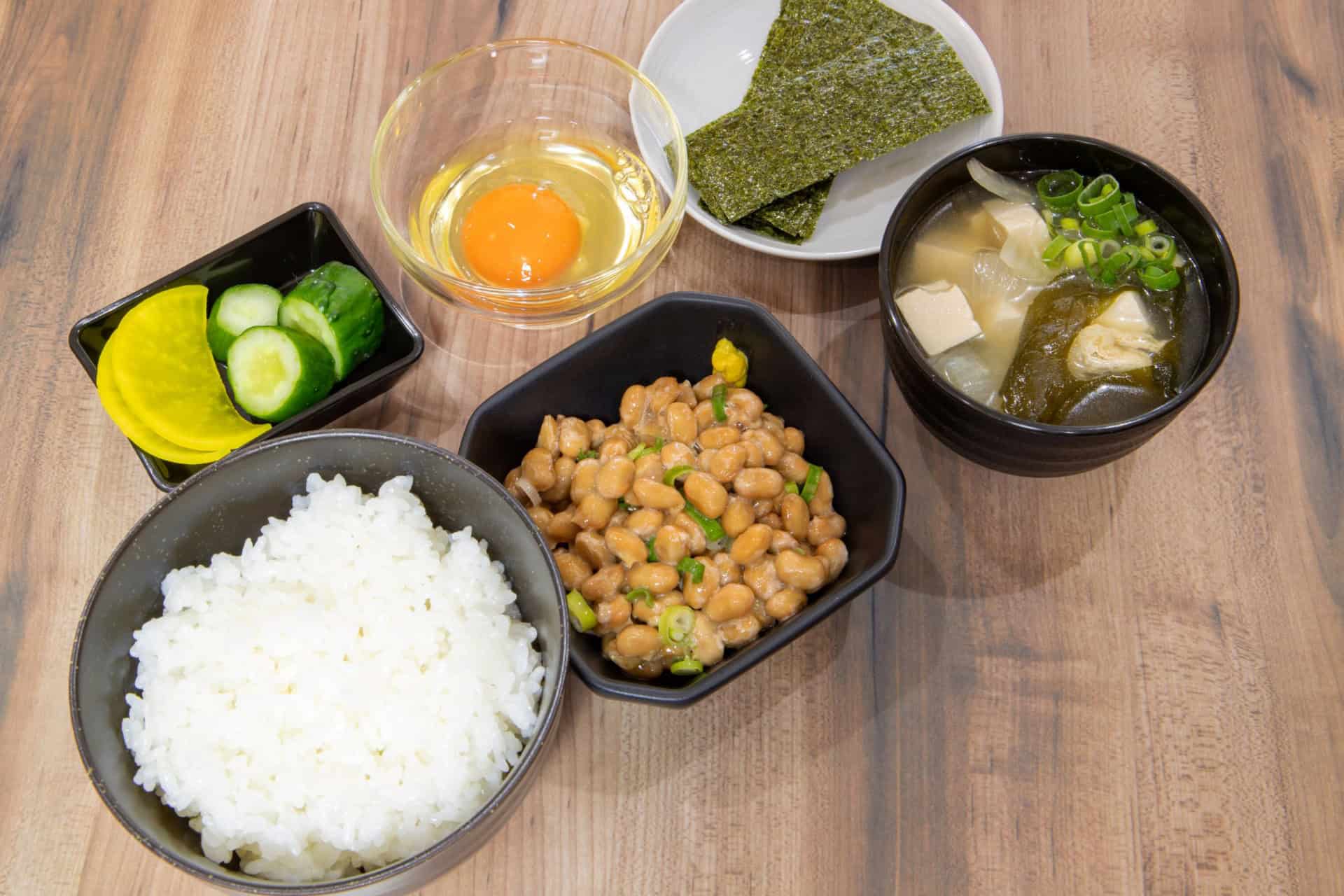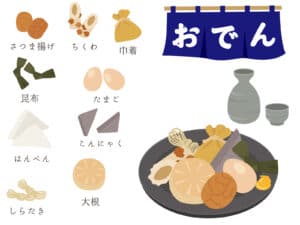Natto—a traditional Japanese food made from fermented soybeans—sits at a fascinating intersection of culinary tradition and cutting-edge nutritional science. While it has graced Japanese dining tables for centuries, the Western world is only beginning to recognize what Japanese health experts have long understood: beneath natto’s distinctive aroma and sticky texture lies a nutritional powerhouse with remarkable health benefits.
This comprehensive guide will explore natto’s exceptional nutritional profile, its scientifically-validated health benefits, how to produce it economically at home after returning from Japan, where to sample authentic natto in Tokyo and its surroundings, and how to maximize its therapeutic potential through optimal consumption methods.
The Science-Backed Benefits of Natto
For centuries, natto has been a staple in traditional Japanese diets, valued for both its unique flavor and remarkable health properties. Modern scientific research has now validated what Japanese health practitioners have long understood: this humble fermented soybean preparation offers a comprehensive array of health benefits. The following illustration highlights the four key areas where natto makes its most significant contributions to human health.
Let’s now explore each of these science-backed benefits in greater detail, examining the clinical evidence and mechanisms behind natto’s extraordinary health-promoting properties.
Optimizing Gut Microbiome Function
Natto’s most celebrated benefit involves its ability to recalibrate intestinal microbiota. The Bacillus subtilis var. natto (natto bacteria) serves as a powerful probiotic that enhances the proliferation and metabolic activity of beneficial gut bacteria, including Bifidobacteria and lactic acid bacteria—the cornerstone species of intestinal health.
Exceptional Nutritional Density
Natto’s remarkable health benefits stem from its exceptional nutritional profile. Far more than just a protein source, natto delivers a comprehensive matrix of nutrients that work synergistically to support multiple body systems. This visual representation highlights the four cornerstone nutrients that make natto a true nutritional powerhouse.
These nutrients, along with additional trace minerals and B-vitamins, contribute to natto’s status as one of the most nutritionally complete plant-based foods available. Let’s examine how these nutrients support specific aspects of human health.
Key Clinical Evidence:
Blood Sugar & Kidney Function: Research from Chinese medical institutions showed diabetic patients obtaining 35% of protein from soy sources experienced improved glycemic control and enhanced kidney function—a rare nephroprotective effect not seen in most medications.
Heart Health: The JPHC Study (90,000 Japanese subjects over 15 years) found an 18% reduction in heart attack and stroke risk among men consuming natto regularly.
For comprehensive details on natto’s health benefits, see this excellent NHK World Japan documentary: https://www.youtube.com/watch?v=izgNm_uwJzA
Economic Home Production: Making Natto Sustainable Beyond Japan
While natto is readily available in Japanese supermarkets at affordable prices, international consumers often face steep markups—sometimes 5-10 times the Japanese retail price. Fortunately, making natto at home is surprisingly simple and extremely cost-effective. The process requires minimal ingredients and equipment, making it accessible for anyone looking to incorporate this superfood into their regular diet.
For detailed visual demonstrations of home natto production, check out these helpful video tutorials showcasing different methods:
Method 1: Using Store-Bought Natto as Starter
A method that steams soybeans and uses 1/4 portion of a frozen natto pack as starter culture, fermenting in an oven without a hot water bottle. Starting with 454g of soybeans (which expand to 908g after steaming), this process yields approximately 45 portions of 50g each. Simply freeze any portions not consumed immediately. (English subtitles available)
Preview
Method 2: Yogurt Maker Fermentation
In this English-language tutorial, the presenter demonstrates how to use commercial natto spores with a yogurt maker to achieve perfect fermentation conditions.
Preview
Method 3: Oven with Hot Water Bottle
[Preview] Another English-language guide showing how to use just 1/9 portion of store-bought natto as starter, fermenting in an oven with a hot water bottle to maintain optimal temperature.
Preview
Method 4: Rice Cooker Fermentation
This demonstration shows how to use natto spores to ferment soybeans in a standard rice cooker set to “keep warm” mode. (English subtitles available)
Preview
Synergistic Food Combinations that Amplify Natto’s Benefits
The therapeutic potential of natto can be significantly enhanced by pairing it with specific complementary foods. These strategic combinations not only improve flavor and texture but also work synergistically to amplify particular health benefits. Below are five powerful pairings that can transform your natto experience while maximizing its health-promoting properties.
Each of these combinations offers unique advantages, allowing you to customize your natto consumption based on your specific health goals. Whether you’re focusing on gut health, blood sugar management, or detoxification, these pairings provide targeted ways to enhance natto’s already impressive benefits.
Experiencing Premium Natto: Where to Sample Authentic Varieties
Natto creates a distinct divide among Japanese people—enthusiasts consume it daily without fail, while detractors avoid even its sight. The primary objections involve its distinctive fermented aroma and sticky texture. Geographically, eastern Japan (including Tokyo) tends to embrace natto, while western regions (including Osaka) often reject it.
However, dismissing this nutritional superfood based solely on preconceptions would be unfortunate. Here are exceptional venues to experience premium natto:
Tokyo’s Natto Specialty Restaurant
Tokyo’s only dedicated natto specialty restaurant, Natto Kobo Sendaiya, originates from Yamanashi Prefecture where its main store is located. They’ve expanded with two Tokyo branches in Shimokitazawa and Ikejiri-ohashi, each offering an all-you-can-eat experience featuring eight distinct natto varieties: large domestic soybeans, small domestic soybeans, chopped domestic soybeans, edamame natto, sesame natto, wakame seaweed natto, hijiki seaweed natto, and millet natto. Beyond the standard natto set meals, they also serve salmon natto sets and grated yam natto sets. A unique feature is the 24-hour natto vending machine located outside the store, making this superfood accessible anytime.
Shimokitazawa Branch
Essential Information
- Name: Natto Kobo Sendaiya Shimokitazawa Branch (納豆工房 せんだい屋 下北沢店)
- Genre: Dining hall, Deli, Sweets
- Contact: 03-5431-3935
- Reservations: Not accepted
- Address: 3-25-1 Kitazawa, Setagaya-ku, Tokyo
- Access: 10-minute walk from Shimokitazawa Station East Exit (Odakyu Line/Keio Inokashira Line), 264m from the station
- Hours: 11:00 – 16:00 (Please confirm with the restaurant before visiting as hours may change)
- Budget: Around ¥1,500
- Payment Methods: Cash only, QR code payment accepted (credit cards and electronic money not accepted)
Preview
Location
Ikejiri-ohashi Branch
Essential Information
Essential Information:
- Name: Natto Kobo Sendaiya Ikejiri-ohashi Branch (納豆工房せんだい屋 池尻大橋店)
- Genre: Japanese cuisine, Western sweets, Café
- Contact: 03-5431-3935
- Reservations: Not accepted
- Address: 1F Ryuuseidou Building, 3-20-3 Ikejiri, Setagaya-ku, Tokyo
- Access: 4-minute walk from Ikejiri-ohashi Station West Exit (Tokyu Den-en-toshi Line), 342m from the station
- Hours:
- Restaurant: 11:00 – 15:00 (Last order at 15:00)
- Shop: 11:00 – 18:00
- No regular holidays
- Budget: Around ¥1,500
- Payment Methods: Credit cards accepted (VISA, Master), QR code payment accepted (PayPay), electronic money not accepted
Preview
Location
Mito: Japan’s Natto Capital
When Japanese people are asked about natto’s production center, they invariably identify Mito, Ibaraki Prefecture. The region specializes in producing the small soybeans ideal for natto production.
Throughout the Mito Station area, numerous establishments serve natto set meals, with Tengu Natto Souhonke and Tenmasa being particularly renowned. While the two-hour one-way bus journey from Tokyo may seem excessive solely for natto, Mito also houses Kairakuen—one of Japan’s three great gardens—featuring breathtaking landscapes that exemplify Japanese garden artistry. The adjacent Kodokan, a 200-year-old Edo-period university, remains remarkably preserved. Combining these cultural attractions with natto gastronomy justifies the journey.
Mainstream Options for Natto Enthusiasts
For established natto aficionados seeking convenient access, Japan’s three major gyudon (beef bowl) chains—Sukiya, Yoshinoya, and Matsuya—with over 4,000 locations collectively, offer natto set meals at economical prices during breakfast hours (until 11 AM). Natto can be ordered separately at other times. However, these establishments serve mass-produced natto varieties that may not provide an optimal introduction for first-time consumers.
Optimizing Natto Consumption for Maximum Benefit
The most crucial aspect of natto consumption involves preserving its “nattokinase” enzyme. Since this enzyme deactivates at high temperatures, consuming natto raw rather than heated is optimal. Before adding soy sauce or Japanese mustard, thoroughly mix the natto 70-100 times until it develops a foamy consistency. This process activates the enzymes and enhances flavor.
Some video demonstrations incorrectly show adding soy sauce before mixing ー a method that compromises both therapeutic and flavor qualities.
Bonus Recipes
For culinary inspiration, explore these innovative natto preparations:
Natto Cheese Omelet:

Preview
Natto Cheese Toast:











コメント